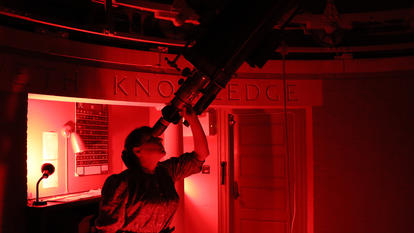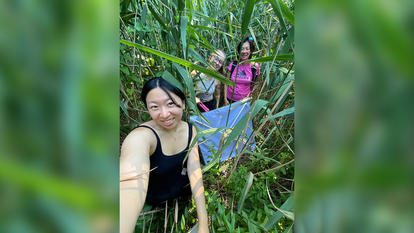Investing in the Next Generation of Women Scientists: Wellesley’s New Science Center
In a recent presentation to the Wellesley community, Ann Velenchik, dean of academic affairs, shared an overview of the new Science Center building project and a rough schedule for its construction, and introduced Colin Koop of Skidmore, Owings & Merrill LLP (SOM), the firm designing the complex.
Koop said he was delighted to show the results of almost two years of active collaboration with many members of the community, “trying to imagine what the next-generation Science Center would look like at Wellesley College.”
He began by discussing the landscape. Wellesley “put the landscape first when considering what the campus should be,” he said, and the architecture is meant “to evolve in harmony or in dialogue with it.” He and the SOM team of architects found that view of architecture—not seeking to superimpose or force itself upon the landscape, but rather to work with it—to be very contemporary.
Today, he said, one of the first things you notice when approaching Science Hill is that people are actively engaged with the landscape. “You see students outdoors. You see them experimenting. You see them trying out new things and taking their education outdoors,” he said. “And that’s something we want to heighten.” The goal is to shape a landscape that complements the larger vision for the project, he added, “while also allowing teaching and learning and science to extend outdoors.”
To reimagine the facility, he said, Wellesley began by asking two questions: How do we create the ideal environment for 21st-century science teaching, learning, and research? How can we amplify Wellesley’s position at the forefront of undergraduate science education and research?
In its design, the team sought to combine functional and aesthetic values in support of the College’s mission, Koop said, as well as to make a strong and meaningful connection between the new and the old.
Throughout the design process, the team weighed the responsibility to honor architectural history against the equally important responsibility to provide safe and modern spaces for teaching and research in science. As a result, the building plans preserve the existing Sage Hall brick walls that make up two sides of the triangular Focus, while the building itself will be replaced with a highly functional new science building centered around the Chao Innovation Hub. The design provides an elegant solution to some current problems: It adds needed continuity between levels of the L-wing and the levels of the new building, brings more natural light into the complex, and, for the first time, makes navigating the building intuitive. “Knowing where the center of the building is, you know how to move through the building,” said Koop.
The vision for the future Science Center embraces academic excellence, collaboration, sustainability, and a strong connection to the environment by:
- transforming Science Hill into a living laboratory—connecting students and faculty with the natural world so that Science Hill fosters teaching and learning about science outdoors;
- emphasizing natural light and fluid collaboration between spaces;
- using space and vistas—with views out to engage with nature and views within to follow science taking place—to create collaborative and creative experimentation;
- encouraging interconnectedness between students and faculty, and among students themselves, as central to learning; and
- paying tribute to the generations of architects—and educators—that came before.
In keeping with the College’s ongoing sustainability initiatives, the new Science Center will have upgraded systems and features that improve energy consumption. (The current Science Center is the largest energy consumer on campus.)
The Whitin Observatory will also get a new telescope and renovations to its current dome, and the new Global Flora greenhouse project will improve students’ and faculty’s ability to study plant form and its interaction with environmental conditions.
Caption: The reimagined Science Center forms a "village of sciences” up on Science Hill.



